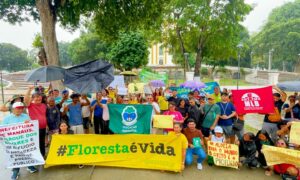By André Antunes
Within the discipline of Conservation Biology, ‘management’ is considered as a broad set of efforts and processes, involving the application of scientific tools in order to establish new perspectives in relation to the environment, both on a local and global scale. It is a relatively new word, used mainly from the 19th century, when society felt the need to plan actions to recover habitats and populations of species impacted by predatory human activities.
However, if we consider that management can also be understood as a set of practices that manipulate the environment with the aim to make it more conducive to human well-being and more resilient to vulnerabilities and uncertainties, we can see that management by definition is as old as human history itself. ‘Taking care’ of the land, ‘guarding’ or ‘protecting’ it, in addition to being recurrent terms in indigenous languages, also refer to economic, social and cultural practices that tend to transform the landscape over time. For example, planting and selecting fruit species most convenient to human well-being changes the forest structure and composition, and ends up attracting different species of animals, including larger-bodied animals frequently targeted by people as game species. In the Amazon, hunting is essential for feeding indigenous, traditional and peasant populations. Wildlife management is as diverse as the social and ecological complexity of the region, and as its rich ethnic and biological diversity. For indigenous people, the very conception of the world goes back to a time when humans and animals used to socially interact. And the constant development of such social relations continues to demand a code of ethical conduct on the part of the hunter, with regard to hunting, to avoid the potential revenge of owner-spirits towards those who disrespect such norms.
Finally, one of the most important mechanisms for the Amazon’s resilience to hunting is the continental extent of the forest itself! The difficult access to areas far from villages and communities ensures that animals are able to live and reproduce there, free from hunting. For Amazonian populations, management is an integral practice! It connects natural and supernatural, biological, physical and climatic elements, providing social, economic and cultural processes for the well-being and ways-of-life of rural people. Above all, the management of the Amazon requires that standing forest and indigenous/traditional territories are properly secured!
–
André Antunes is a biologist with a doctorate in Ecology from the National Institute for Research in the Amazon, seeking to combine research and extension as a way to improve the effectiveness of fauna management and conservation practices in the Amazon. His efforts are at subsidizing planning and implementation of conservation in landscapes, combining scientific tools and traditional knowledge.






